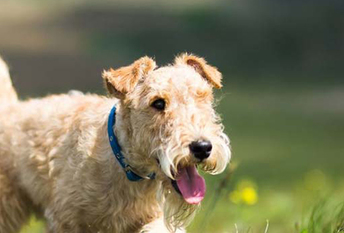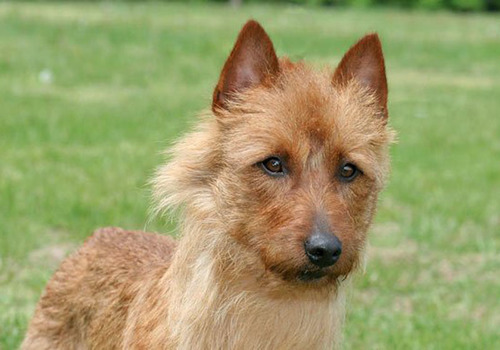There is nothing complicated about grooming an Australian Terrier. Brush his coat once a week with a soft slicker brush, trim his toenails once a month, and bathe him in mild shampoo as needed every three months or so. Check the ears once a week for dirt, redness, or a bad odor that can indicate an infection, then wipe out weekly using a cotton ball dampened with gentle ear cleaner recommended by your veterinarian to prevent problems.
Regular tooth brushing with a soft toothbrush and doggie toothpaste will help keep the Australian Terrier’s teeth and gums healthy and his breath fresh. Introduce him to grooming when he is young so he learns to accept the fuss and handling of grooming graciously.
Australian Terrieris very active and requires regularexerciseto keep from becoming bored and unhappy. Boredom leads to undesirable behavior.
Daily play sessions, indoors or out, will keep an Aussie happy and well adjusted. However, these sessions must take place is a securely fenced yard, and when on walks or hikes, an Aussie must be on a leash.
Aussies should never run loose—their instinct to hunt is very strong, and they might not be able to resist running off to chase a cat or squirrel, and might pursue their prey so far from home that they can’t find their way back.
American Staffordshire Terrier needs high-quality dog food. Check to make sure that the first ingredient of the food you will be feeding your dog is meat. In terms of nutrients, crude protein should be no less than 30 percent, crude fat should be no less than 20 percent and fiber content needs to be 4 percent or less.
The average life span of the Australian Terrier is 12 to 15 years. Breed health concerns can include allergies, arthritis, cancer,cataracts,diabetes,Legg-Calve-Perthes disease, patellar luxation andthyroid problems. Generally, Australian Terriers are hardy and healthy little dogs.
Aussies, like many terriers, benefit greatly from puppy training classesand introductory obediencewith treats,toys, or praise. Aussies are easily bored with routine, so training sessions will be short, whether the owner wants them to be or not.
They are also willful and stubborn, so a firm, consistent approach is necessary. Even with training, though, an Aussie can be reluctant to share toys or human attention, and two males may not be able to share a household.











